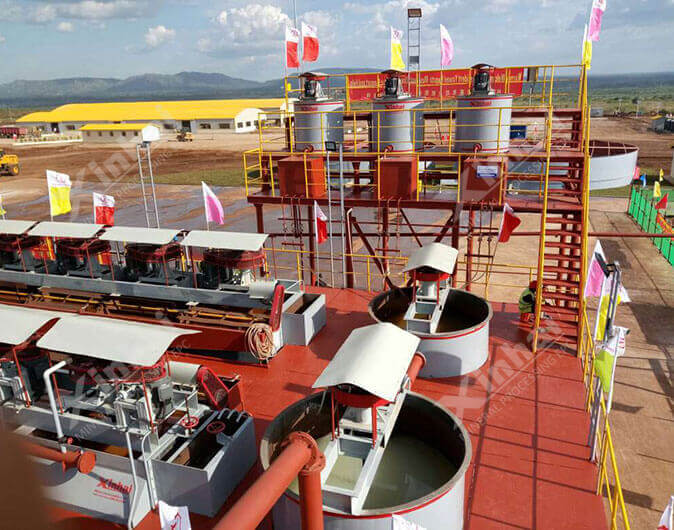If you want to know more information (such as product/process price, etc.), please contact us 24-hour telephone
Zimbabwe, a resource-rich country in Southern Africa, has garnered global investor attention in recent years due to its mining potential. Below is a detailed analysis of Zimbabwe’s mining investment environment, covering resource endowment, policies, infrastructure, risks, and opportunities:
Zimbabwe boasts one of Africa's richest mineral reserves, including:
1. Precious Metals
Platinum Group Metals (PGMs): Third-largest global reserves (after South Africa and Russia), concentrated in the Great Dyke region.
Gold: Proven reserves of ~1,300 tons, but underdeveloped extraction (2023 production: ~30 tons).
2. Lithium
Among the world’s largest lithium resources (~11 million tons LCE), driven by surging EV demand.
3. Diamonds
The Marange fields in the east were once a major global source, though production has declined.
4. Other Minerals
Coal (~30 billion tons), chromium (second-largest reserves globally), nickel, copper, and rare earth elements.

1. Ownership and Foreign Investment Rules
Foreign Ownership: 100% foreign ownership permitted for most minerals, except PGMs and diamonds (capped at 50% foreign stake, with government joint ventures).
Licensing: Two-tier system (Prospecting License and Mining Claim) administered by the Ministry of Mines.
Indigenization Policy: The 2018 revision scrapped the mandatory 51% local ownership rule, replacing it with community empowerment programs.
2. Fiscal Terms
Corporate Tax: Base rate of 24.72% (including surcharges).
Royalties: Vary by mineral (e.g., gold 5%, lithium 2%, PGMs 5%).
Tax Incentives: Duty-free import of mining equipment; VAT refunds.
Currency Rules: Mandatory conversion of 50% export earnings to local currency (ZWL), posing liquidity risks.
3. Key Legislation
Mines and Minerals Act (Amended 2023): Streamlines permitting via an e-licensing system.
Indigenization and Economic Empowerment Act: Requires Community Development Agreements (CDAs) for local infrastructure or education projects.
Environmental Regulations: Mandatory Environmental Impact Assessments (EIAs) and mine rehabilitation plans.
1. Power Supply
Chronic shortages (installed capacity: ~2,300 MW; demand: ~2,000 MW), reliant on imports and diesel generators.
Investors often need off-grid solutions (e.g., solar plants).
2. Transportation
Aging rail networks; reliance on road transport with poor access to remote mines.
Key export routes: Durban (South Africa) and Beira (Mozambique) ports, with high logistics costs.
3. Labor
Skilled labor shortages necessitate foreign expertise or local training programs.
1. Macroeconomic Risks
Currency Volatility: Hyperinflation (~200% in 2023); USD transactions preferred.
Foreign Exchange Shortages: Central bank reserves constrain profit repatriation and imports.
2. Political and Governance Risks
Policy Uncertainty: Sudden regulatory shifts (e.g., 2022 ban on raw lithium exports to enforce local processing).
Bureaucracy and Corruption: Cumbersome permitting processes and rent-seeking risks.
3. Social and Environmental Risks
Community Conflicts: Land ownership disputes require negotiations with local chiefs.
Environmental Scrutiny: NGOs closely monitor ecological impacts of mining.
1. Strategic Mineral Demand
Lithium, PGMs (for hydrogen tech), and rare earths align with global energy transition trends.
2. Government Incentives
Special Economic Zones (SEZs) offer reduced corporate tax (15%) and duty exemptions.
Zimbabwe is Open for Business” policy prioritizes FDI.
3. Chinese Investor Success Stories
Huayou Cobalt: $300 million Arcadia lithium project, targeting 500,000 tons of lithium concentrate annually.
Sinomine Resource Group: Acquired Bikita lithium mine to build a supply chain.
1. Partnerships
Joint ventures with local firms or government entities can mitigate political risks (due diligence critical).
2. Compliance and ESG
Prioritize environmental and social governance to avoid community backlash.
3. Risk Mitigation
Use political risk insurance (e.g., MIGA) and USD-denominated contracts.
Conclusion
Zimbabwe’s mining sector offers significant potential but requires balancing resource wealth with complex risks. Investors must conduct thorough due diligence, monitor policy shifts, build local partnerships, and adopt long-term risk strategies. For firms with capital and risk appetite, Zimbabwe’s lithium and PGM sectors could serve as strategic footholds in the global energy transition.